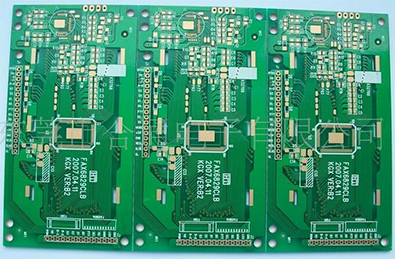In the intricate and ever-evolving realm of PCB (Printed Circuit Board) manufacturing, the strategic integration of process margins emerges as a cornerstone for achieving optimal production outcomes, particularly in the context of facilitating the subsequent SMT (Surface Mount Technology) assembly process. These process margins, essentially extensions appended to the periphery or all four sides of a PCB, function as vital auxiliary structures that bolster production efficiency without compromising the integrity of the final PCB product. Their removability post-manufacturing underscores their non-essential nature to the core functionality of the board, allowing for a streamlined final product.
Economic Viability and Manufacturability Harmony
While the inclusion of process margins inevitably translates into a heightened consumption of PCB material, leading to an increase in overall production costs, it is imperative for designers to delicately navigate the fine line between cost-effectiveness and manufacturability. This balance becomes even more crucial when dealing with PCBs of unique or irregular shapes, where the judicious use of process margins becomes a paramount concern. Ingenious panelization strategies, involving the clever arrangement of multiple PCBs within a larger panel, can significantly streamline the production process by minimizing the total number of required margins. By reducing the number of margins from four to two or even less in some cases, manufacturers can optimize material usage, leading to cost savings without compromising on quality.
Furthermore, when designing penalization layouts specifically for SMT assembly, it is essential to consider the track width capabilities of the SMT placement machines. Panels exceeding a certain width threshold, typically 350mm, necessitate close collaboration with the SMT supplier's process engineers to ensure seamless integration and to avert potential bottlenecks that could disrupt the production flow.
Collision Prevention and Smooth Production Flow
The primary rationale for incorporating process margins stems from the intricacies of the SMT placement process. The tracks of SMT machines are designed to securely grip and transport PCBs through the assembly line, ensuring precise and efficient component placement. However, components positioned perilously close to the edge of the PCB risk collision with the machine's nozzles as they attempt to pick and place them, leading to production disruptions and potential damage to both the components and the machinery. To avert such collisions, the introduction of process margins, typically ranging from 2-5mm in width, serves as a crucial buffer zone. This precautionary measure not only ensures smooth component placement but also prevents costly downtime associated with collisions, thereby maintaining the overall efficiency of the production line.
Similarly, process margins play a pivotal role in preventing similar issues for through-hole components undergoing wave soldering by providing additional clearance and safeguarding the integrity of the soldering process.
Precision Assembly and Flatness Maintenance
The flatness of PCB process margins is yet another critical aspect that cannot be overlooked during the production process. The precision required during the removal of these margins is paramount, especially for PCBs that necessitate stringent assembly accuracy. Even the slightest irregularity or burr left behind can lead to the misalignment of mounting holes, causing significant complications during subsequent PCBA (Printed Circuit Board Assembly) processes. Therefore, ensuring a smooth, even edge after margin removal is essential for maintaining the overall quality and functionality of the PCB.
In conclusion, the strategic incorporation of process margins in PCB production represents a testament to the intricate balance manufacturers must strike between cost, efficiency, and quality. By meticulously designing and managing these margins, manufacturers can optimize their production processes, minimize the risks associated with collisions and misalignments, and ultimately deliver high-precision PCBs that cater to the demands of today's sophisticated electronic systems. The attention to detail exhibited in managing process margins underscores the commitment to excellence in PCB manufacturing, ensuring that every component is placed with utmost precision and every connection is flawless, thereby contributing to the reliability and performance of the final product.




